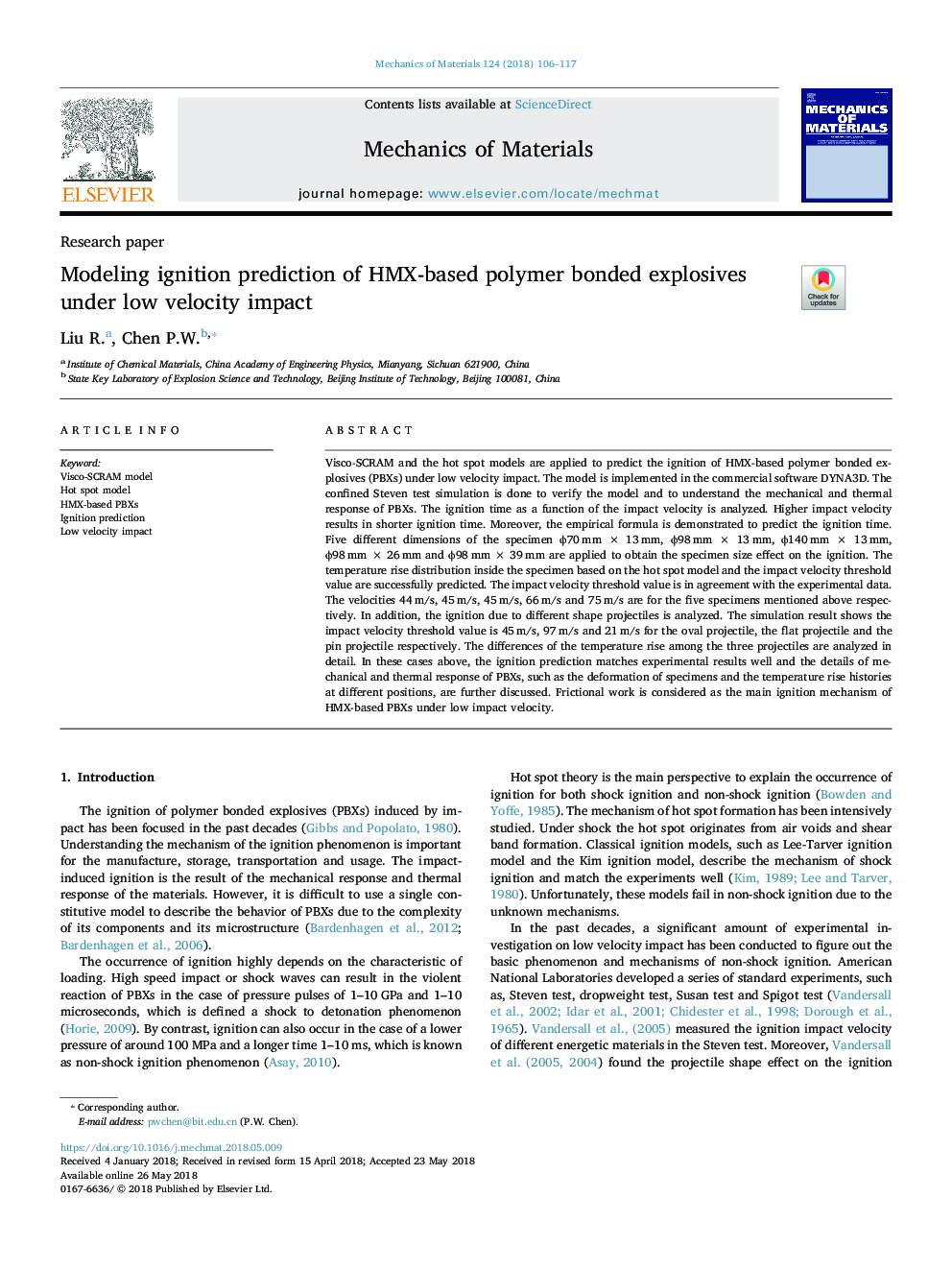| Article ID | Journal | Published Year | Pages | File Type |
|---|---|---|---|---|
| 7178489 | Mechanics of Materials | 2018 | 12 Pages |
Abstract
Visco-SCRAM and the hot spot models are applied to predict the ignition of HMX-based polymer bonded explosives (PBXs) under low velocity impact. The model is implemented in the commercial software DYNA3D. The confined Steven test simulation is done to verify the model and to understand the mechanical and thermal response of PBXs. The ignition time as a function of the impact velocity is analyzed. Higher impact velocity results in shorter ignition time. Moreover, the empirical formula is demonstrated to predict the ignition time. Five different dimensions of the specimen Ï70â¯mm Ã 13â¯mm, Ï98â¯mm Ã 13â¯mm, Ï140â¯mm Ã 13â¯mm, Ï98â¯mm Ã 26â¯mm and Ï98â¯mm Ã 39â¯mm are applied to obtain the specimen size effect on the ignition. The temperature rise distribution inside the specimen based on the hot spot model and the impact velocity threshold value are successfully predicted. The impact velocity threshold value is in agreement with the experimental data. The velocities 44â¯m/s, 45â¯m/s, 45â¯m/s, 66â¯m/s and 75â¯m/s are for the five specimens mentioned above respectively. In addition, the ignition due to different shape projectiles is analyzed. The simulation result shows the impact velocity threshold value is 45â¯m/s, 97â¯m/s and 21â¯m/s for the oval projectile, the flat projectile and the pin projectile respectively. The differences of the temperature rise among the three projectiles are analyzed in detail. In these cases above, the ignition prediction matches experimental results well and the details of mechanical and thermal response of PBXs, such as the deformation of specimens and the temperature rise histories at different positions, are further discussed. Frictional work is considered as the main ignition mechanism of HMX-based PBXs under low impact velocity.
Keywords
Related Topics
Physical Sciences and Engineering
Engineering
Mechanical Engineering
Authors
Liu R., Chen P.W.,
